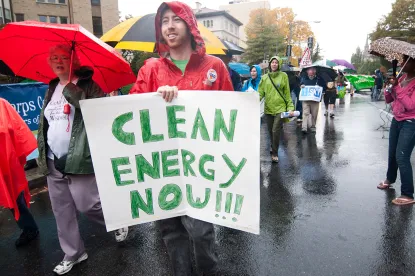There has been much (deserved) discussion on federal standalone energy storage incentives passed in the Inflation Reduction Act, but a new state-level incentive is taking shape in New Jersey. Yesterday, the New Jersey Board of Public Utilities (“BPU”) released its awaited New Jersey Energy Storage Incentive Program (“NJ SIP”) Straw Proposal in an NJBPU Notice along with a schedule of virtual stakeholder meetings in October and November. The program will be formalized through a final BPU Order to ultimately support NJ’s statutory mandate to initially achieve 600 megawatts of installed energy storage in 2021, growing to 2,000 MW by 2030. Comments on the Straw Proposal are due by December 12, 2022.
As this Straw Proposal will likely guide the contours of the final program, below are some preliminary details on what sponsors and financing parties can expect:
-
Two energy storage programs would be created for Front-of-Meter/Grid Supply and Behind-the-Meter/Distributed energy storage incentives (and separate market segments will be created for both types of storage), both patterned after the solar-plus-storage program proposed in the NJBPU’s Competitive Solar Incentive (“CSI”) Program. The standalone incentives programs will be designed to incentivize stand-alone energy storage devices physically connected to a New Jersey electric distribution company (“EDC”).
-
Incentives are not retroactive. Only energy storage projects placed into service after the date of the NJBPU Order establishing the program would be eligible for incentives.
-
Eligibility for NJ SIP incentives will be technology neutral and based only on meeting functional requirements.
-
At least 30% of the NJ SIP incentive will be structured as a fixed annual incentive, paid in $ per kilowatt-hour of energy storage capacity, contingent on satisfactory up-time performance metrics.
-
The NJ SIP fixed incentive will be established through a declining block structure in order to establish a market-based incentive. The Grid Supply and Distributed market segments will each have their own pricing structure.
-
The remaining NJ SIP incentive would be provided through a pay-for-performance mechanism:
-
For FTM/Grid Supply storage resources, payment is based on the amount of carbon emissions abated through operation of the energy storage device, determined by measuring the marginal carbon intensity of the wholesale electric grid (Marginal Emissions Rate set by PJM Interconnection, LLC] at the time the energy is discharged, minus the carbon intensity of the energy drawn during the charging interval for the resource; and
-
For Distributed storage resources, payment is based on the successful injection of power into the distribution system when called upon by the EDC during certain performance hours, established by each EDC;
-
-
A portion of the Distributed storage incentive program will be reserved for projects located in, or directly serving, overburdened communities.
Notably, the NJBPU Notice states that the incentive programs are intended to permit private investors to own and operate the energy storage devices, as well as allow them to (1) “stack” revenues from the wholesale electricity market, (2) utilize the behind-the-meter resource to actively manage energy usage at the distribution level and reduce electricity costs, and (3) participate in a Distributed Energy Resource (“DER”) Aggregation service, when available.
Lastly, it should be noted that the Straw Proposal caveats that the creation of federal tax incentives for standalone storage in the Inflation Reduction Act “may warrant moving incentives up or down and [the NJBPU] seeks comment on where initial incentives should be set.”
This is only the Straw Proposal, which will go through a variety of stakeholder discussions, but this is a positive development for energy storage deployment in New Jersey. Interested parties can review the Notice for information on the stakeholder meetings (including registration), which are scheduled to occur beginning on October 21 through November 14.




 />i
/>i

